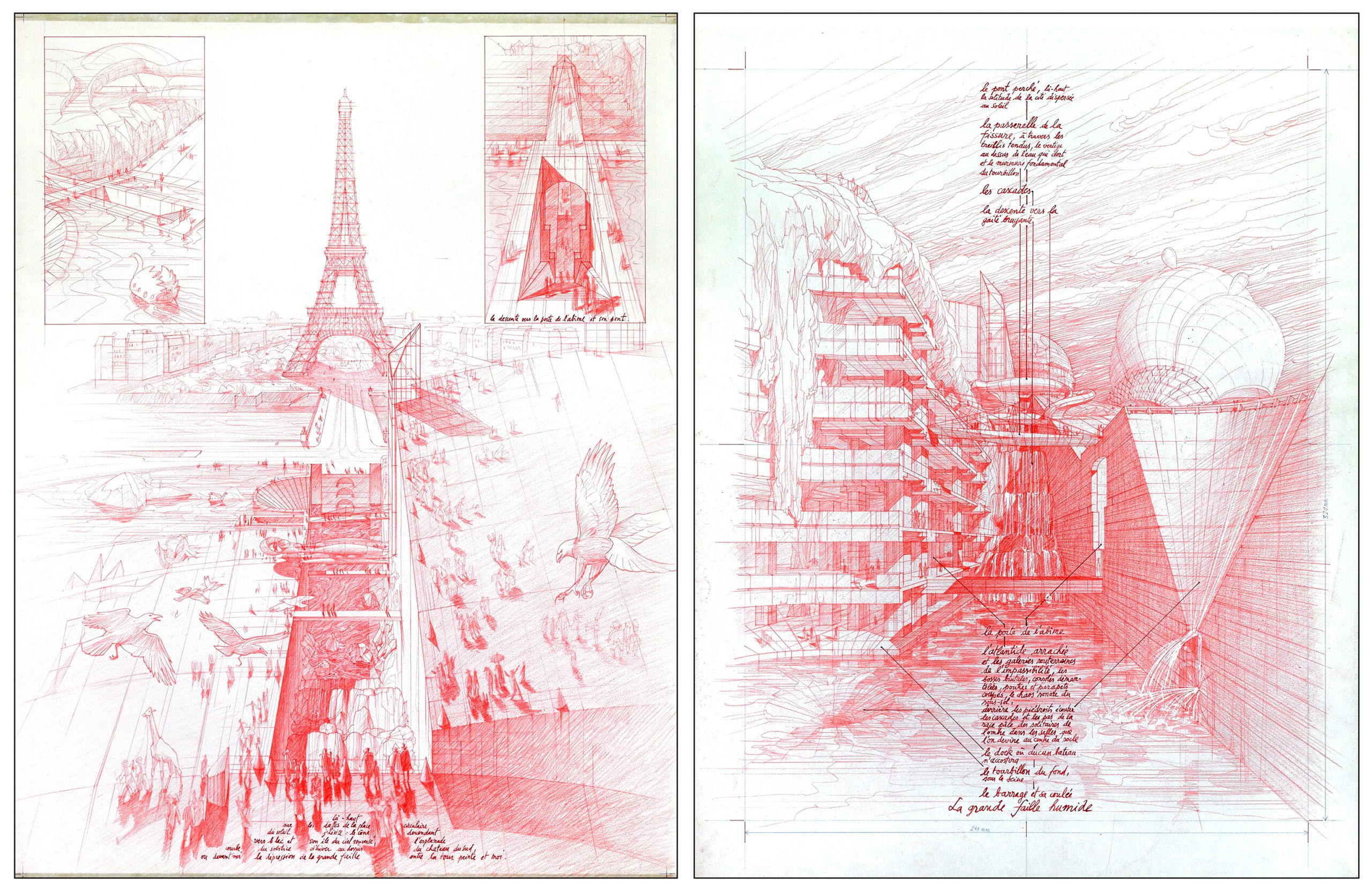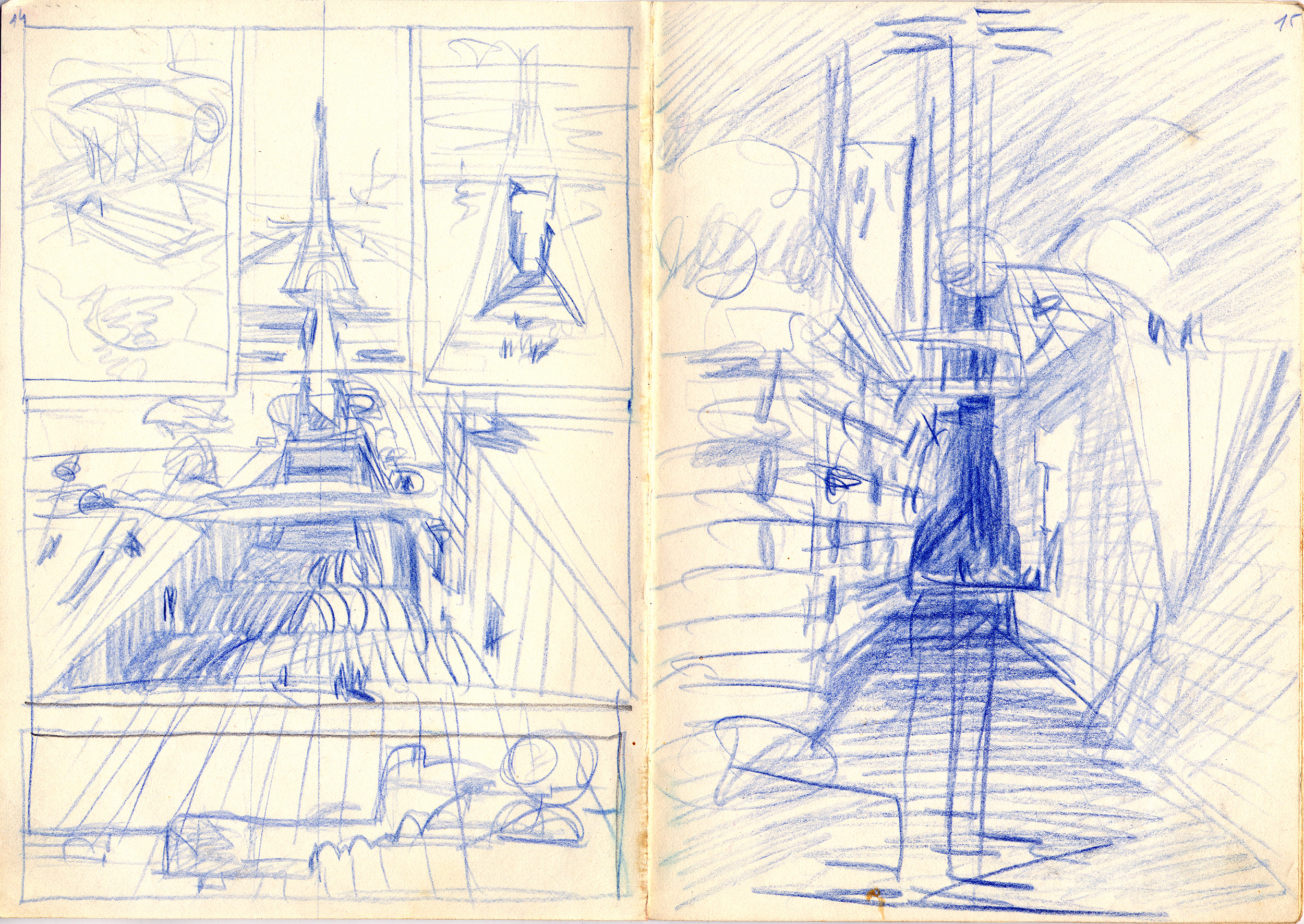Carlos Machado e Moura
Between the 26th February and the 8th March 2020, I was in Paris for a Short-Term Scientific Mission (STSM) titled “Learning from Paris. The drawn narratives of L’ivre de Pierres”. It predominantly took place at the Pompidou Centre’s research library and archival fonds (Bibliothèque Kandinsky), but also in other libraries and centres, such as the MAD/Musée des Arts Décoratifs – where the Jean-Paul Jungmann fonds are held –, Bibliothèque Nationale de France (BNF – Tolbiac); the Library of the École Nationale Supérieure d’Architecture Paris-Malaquais and the Library of the Conservatoire des Arts et Métiers, besides visiting the a series of locations in the city.
I was interested in digging deep into Jean-Paul Jungmann’s and Hubert Tonka’s editorial experiment L’ivre de Pierres, which produced four large-format books (1977- 1983) plus a fifth unpublished volume (1982-1988), providing a series of visions, mostly located in Paris, conceived according to architectural narrations, in successive sheets, to be read in a book. In L’ivre de Pierres we find a clear expression of a synthesis between architecture and printed work, testifying «the desire of writing architecture as if we wrote a story, a novel, with words and images» (Jungmann, 1982, p. 15). To consult the books, the drawings and other related documentation allowed me not only to decipher the motivations and the contexts of each book and project, but also to enquire on the methods and on the approach carried by Jungmann and many other authors on the pages of L’ivre de Pierres.
This unconventional approach of figurative writing translates architectural invention into printed work and reveals a form of «participating in urban creativity and the foundation of an image by specific architectural means, as others would do through painting or literature, advertising, cinema or comics» (Jungmann, 1984, p. 3). Anchoring each theoretical project in a real site and history, Jungmann does not renounce to the project in favor of discourse, although doing it in a poetic, literary way, detached from any land property and market constraints. In L’ivre de Pierres, «to write a project is telling the city». In other words, using architectural devices to writing urban places.
Jungmann, J.-P. (1982). Histoires à editer. In H. Tonka, Le Guide du Paris de L’ivre de Pierres. Paris: ARC/Musée d’Art Moderne de la Ville de Paris.
Jungmann, J.-P. (1984). Écrire un projet est racconter la ville. In J.-P. Jungmann, H. Tonka (eds.), L’Ivre de Pierres chez CL.-N. Ledoux. Paris: Aérolande.

